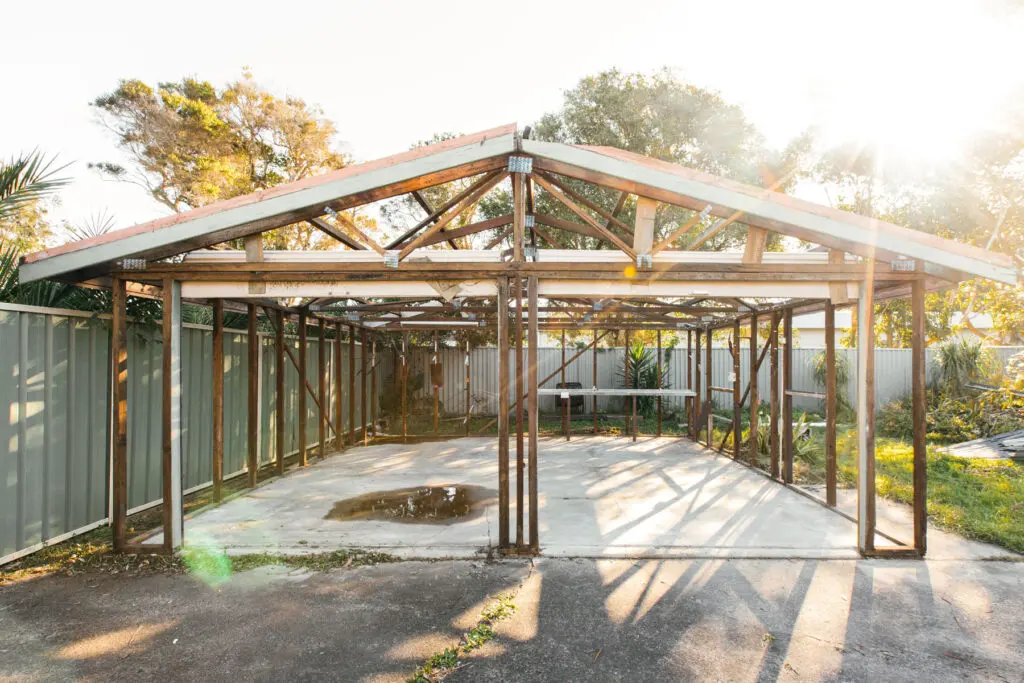FAQ'S
Asbestos FAQ's
Asbestos is a group of naturally occurring minerals that were historically mined for use in a wide range of building materials. It was used due to its properties of strength, fire resistance and insulation.
Breathing asbestos fibers is a direct cause of serious lung diseases, including asbestosis, lung cancer, mesothelioma and pleural plaques.
If your house was built before 1990 it is likely to have asbestos containing material. Houses built after 1990 are unlikely to have asbestos containing materials, however asbestos wasn’t completely banned in Australia until 2004.
If you think asbestos has been damaged in your home, you should immediately seal off the area. Close and seal the door to the room and make sure everyone is kept well away from the area. Do not attempt to do any further work in the area or clean up any damage. Call your insurer or call us directly to attend and complete an ‘asbestos make safe’ to ensure all fibres are contained so the next steps in the process can then safely take place.
Bonded asbestos is where the asbestos fibers are bonded within the product, whereas friable asbestos is in materials that can be easily crushed or pulverised into a power form. As a result, the risks with friable asbestos are significantly higher as harmful asbestos fibers are more readily released into the air whenever these materials are disturbed. By law, bonded asbestos may be removed by a Class A or B licensed asbestos removalist, however, friable asbestos can only be removed by companies with a Class A license. Rabek operated under a Class A license and can safely remove all forms of asbestos.
Examples of bonded asbestos include fibro cladding, eaves, wall & ceiling linings, corrugated roofing, barge capping, flashings, gutters, down pipes and some types of vinyl floor tiles.
Examples of friable asbestos include pipe lagging, vermiculite, loose-fill insulation, asbestos dust, vinyl floor tiles (including backing paper and some glues), asbestos affected by fires, and where bonded asbestos is significantly damaged or weathered.
Asbestos testing is the only way to be certain if materials contain asbestos or not. We can arrange for a sample to be safely collected and sent for NATA approved laboratory analysis. Results are available within 3-5 days, which can be expedited if required for an additional charge. If the test for asbestos is positive, we will prove a quote for the safe removal with the test report.
An asbestos licence is not required when removing less than 10m2 of bonded asbestos. However, all aspects of the Code of Practice ‘How to Safely Remove Asbestos’ must still be followed including the requirements for methods, tools, personal protective equipment (PPE) and disposal. It is important to remember that bonded asbestos removal greater than 10m2 and all friable asbestos must only be removed by an asbestos removalist with the correct class of licence.
The Asbestos Diseases Foundation of Australia (ADFA) “strongly recommends that you DO NOT undertake the removal of asbestos from your home by yourself”. So please, let our team take care of all your asbestos needs.
A licensed contractor is required to remove bonded asbestos over 10m2, and any friable asbestos. Our team will:
– Notify Safework NSW of the asbestos removal (minimum 5 days prior)
– Prepare a SWMS (Safe Work Method Statement) and ARCP (Asbestos Removal Control Plan), assessing any risks and outlining the safe removal of the asbestos.
– Notify any neighbours of the asbestos removal, as required by Safework NSW
– Safely remove asbestos, in accordance with the Code of Practice ‘How to Safely Remove Asbestos’
– Engage in an independent hygienist for to inspect the work area following asbestos issue an Asbestos Clearance Certificate deeming the area safe.
All asbestos must be disposed of at a waste facility that is licensed to receive asbestos waste, to be buried in designated areas and covered with a capping layer of soil. Asbestos must be double bagged or double wrapped in 200um plastic prior to leaving site. The licensed removalist must notify the EPA of collection and disposal of each load using the EPA Waste Locate app. We also take the additional measures of tracking our tippers and retaining all weigh bridge receipts so you can have full assurance that we lawfully dispose of all asbestos.
You may need to arrange for a plumber or electrician to disconnect services that penetrate asbestos that is being removed. Alternatively, this can be arranged by your insurer, builder or us. You should move small items out of the room or area where asbestos will be removed, however, in most instances we can cover large items with plastic. You will need to make plans to go out while we are working and our team can advise you how long the works are expected to take. It goes without saying that our team will thoroughly brief you ahead of our attendance and answer any questions you have.
Your neighbours must be notified a minimum of 24 hours prior if more than 10m2 of bonded asbestos or any friable asbestos is being removed. We will take care of this and make ourselves available to answer any questions they have.
Yes. If more than 10m2 of bonded asbestos or any friable asbestos has been removed, you need to obtain an asbestos clearance certificate. We will engage an independent hygienist to inspect our work and issue you with a clearance certificate.
Demolition FAQ's
Obtaining a quote from our team is easy. Just let us know some information about your project to get started. Our team gather further information from you and also make use of online resources such as ariel mapping tools, Dial Before You Dig, google street view and real estate websites. A site visit can also be arranged where required. Quotes are normally available within 2-5 business days.
Whether you need to obtain approval will depend on the rules of your local council. For small demolition projects, such as removing a rear shed or garage, approval is normally not required. Also, you may not be required to obtain approval if your property has been affected by major events such as fires and flooding. However, more substantial projects will normally require approval, which may be obtained by submitting a Development Application (DA) to the council or by applying for a Complying Development Certificate (CDC) through a building certifier. Approval for demolition works can be applied for separately, allowing you to complete the demolition work while your new building DA is still in council.
Demolition of a structure will be completed through a combination of hand dismantling and machine work. The methods used will depend on the nature of the site and the structures to be demolished. Our highly experienced team develop an optimal and safe demolition plan for each project.
The presence of asbestos or other hazardous materials must be determined prior to demolition taking place. If there is asbestos present, it will need to be safely removed prior to demolishing structures. We will engage an independent hygienist to issue an asbestos clearance certificate, which will be required by council or your certifier at the completion of the project.
This depends on the size of the property and any additional works you need us to do in order to prepare your site for your new home. We recommend you allow around 2 weeks from our commencement for the demolition of an averaged sized home.
Yes. Electricity, phone, gas, sewer and NBN services must be disconnected for demolition works to proceed safely. Your water account should be left active, with a tap being installed inside of the water meter so there is access to water onsite. You should allow 4-5 weeks for disconnections to take place. In many instances it is simpler for you to arrange for disconnects directly with your service providers but please let us know if you need any assistance.
No. We will allow to install site fencing in our quote, unless your builder has already arranged for a site fence.
Your approval conditions will likely require you to notify your neighbours and this would be a good thing to do anyway. Where asbestos removal is required, we will inform your neighbours as part of our normal procedures.
Many materials can be recycled including bricks, roof tiles, concrete, metal, timber and green waste. Sustainability is a something our team and our customers value. We take pride in carrying out our works to ensure we are able to recycle and reuse as much material from each project as is practically possible.
We understand that every house holds a wealth of memories. If there is a particular item that you would like to retain, please let us know so we can discuss if that is possible.
Smaller trees, stumps, shrubs, gardens, can all be removed as part of the demolition process, while larger trees may need to be removed by a specialist arborist. You should speak to your local council to find out whether approval is required for removing trees.
Any requirements for documentation will be noted as part of your approval for the demolition works. This may include a demolition certificate or an asbestos clearance certificate if asbestos was removed. Please let us know the requirements and we will provide them for you upon full payment of our invoice.
Yes. There are insurances that must be maintained by all licensed demolition contractors. We are fully insured for asbestos removal liability, public and product liability, workers compensation and vehicle insurances.
References and Resources
Call us today for a free quote.




